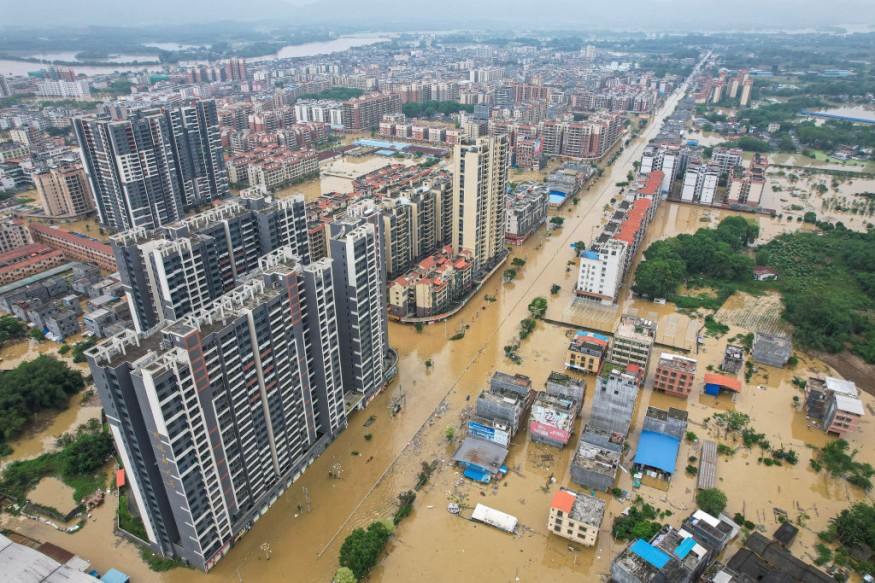
A recent study reveals that nearly half of China's biggest cities are sinking.
The study based on recent satellite data believed that 45 percent of the land in China's largest cities is currently sinking at "moderate to severe" rates.
270 Million Living On Sinking Land
According to a study published in the journal Science, nearly half of China's urban areas, which account for 29% of the country's population, are sinking at a rate greater than 3 millimeters (about 0.12 inches) per year. There are 270 million people living on sinking land.
Meanwhile, 67 million people live on terrain that is subsiding at a rate of more than 10 millimeters (0.4 inches per year).
Researchers believe that one of the key causes of subsidence in China is widespread groundwater extraction.
Cities have been extracting water from subterranean aquifers faster than it can be restored, a predicament made worse by climate change-induced drought. Excessive pumping reduces the water table, causing the surrounding land to sink.
The land is likewise sinking as the weight of cities increases. Soil can compact naturally due to the weight of sediments collecting over time and massive buildings bearing down on the ground, causing the land to gradually sink.
The study also reveals that sinking already causes China to lose more than $1 billion per year. Within the next century, over 25% of coastal land might go below sea level. This would put hundreds of millions of people at serious risk of flooding.
Tianjin, China's northernmost city, with a population of 15 million, has been classified as one of the worst-affected locations.
Last year, 3,000 residents were forced to leave the city due to a "sudden geological disaster" caused by a sinking. Investigators blamed the problem on both water loss and the construction of geothermal energy plants.
"It really brings home that this is for China a national problem and not a problem in just one or two places. And it is a microcosm of what is happening around the rest of the world," said Robert Nicholls of Britain's University of East Anglia.
Worldwide Problem
Land subsidence is not just an issue in China.
New York City is among many coastal cities in the United States that are sinking. In the Netherlands, 25% of the land has dipped below sea level. In Mexico City, perhaps the world's fastest subsiding city, terrain sinks at a rate of up to 50 centimeters (almost 20 inches) every year.
Another study discovered that approximately 6.3 million square kilometers of land worldwide were at risk of further sinking.
Sinking has a greater impact at coastlines, where sea levels are rising concurrently. This combination exposes more land, people, and property to damaging flooding.
Based on a 2022 data, out of the 44 main coastal cities now affected by the problem, 30 were in Asia.
"Most urban cities experience land subsidence, but we focus our attention on coastal cities because of sea level rise. However most urban cities experience land subsidence at rates comparable or even greater than subsidence in coastal cities," said Leonard Ohenhen, a doctoral researcher at Virginia Tech.
Experts suggested that at-risk cities may take lessons from Tokyo. The Japanese capital city fell by roughly 5 meters until officials prohibited groundwater mining in the 1970s.
They noted that in some areas, local officials will have to combat the problem by constructing flood-prevention systems.
Related Article : Sinking Land in Indian Town Forces Hundreds of People to Evacuate; Cracks Appear in Over 600 Houses
© 2025 NatureWorldNews.com All rights reserved. Do not reproduce without permission.





